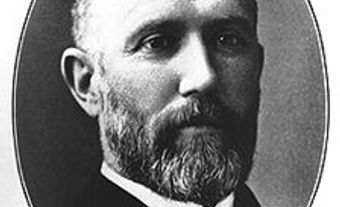This article was originally published in Maclean’s magazine on February 9, 1998. Partner content is not updated.
When he arrived at his Calgary office last Nov. 11 after unveiling a plan to split Nova Corp.'s pipeline and petrochemical operations into separate companies, CEO Ted Newall received an urgent message from his counterpart at TransCanada PipeLines Ltd.Nova and TransCanada Merge
When he arrived at his Calgary office last Nov. 11 after unveiling a plan to split Nova Corp.'s pipeline and petrochemical operations into separate companies, CEO Ted Newall received an urgent message from his counterpart at TransCanada PipeLines Ltd. "Ted, I think you've just solved both our problems," George Watson said when Newall returned the call. With those words, the ball began rolling in what, last week, became the largest deal in Canadian energy sector history: the $14-billion merger of Nova and TransCanada to create the fourth-largest gas pipeline company in North America, with about 6,000 employees. "This is good for Canada," says Newall. "It gives us one player in the big leagues."
The two CEOs hailed the merger as a marriage "made in heaven," but in one respect it was a shotgun wedding. Nova, which has a monopoly over gas collection and distribution in Alberta, and TransCanada, which operates the main line to Central Canada and the United States, currently occupy privileged positions in the Canadian energy industry, but their dominance may soon be shaken by a new and deep-pocketed rival. The proposed $3.7-billion Alliance Pipeline Ltd. project - backed by a consortium of industry giants including Duke Energy Corp. of Charlotte, N.C., and Gulf Canada Resources Ltd. of Calgary - would stretch 3,000 km from northeastern British Columbia to Chicago. If approved by the National Energy Board, the Alliance project would challenge Nova in Alberta and compete head-to-head with TransCanada in the Canada-U.S. market.
Given those pressures, last week's merger did not come as a huge shock to industry observers. In fact, the entire energy sector is now in the throes of consolidation and expansion. On the oil and gas production side, there were $13.2 billion worth of proposed and completed acquisitions in Canada in the first nine months of 1997, up from $10.2 billion in all of 1996 and $7.5 billion in 1995. The latest marriage came last week when Texas-based Union Pacific Resources Group Inc. offered $5 billion for Calgary-based Norcen Energy Resources Ltd. At the same time, there are 15 pipeline projects worth $10 billion on the drawing boards or under construction. Analysts say the low Canadian dollar has spurred acquisition activity at a time when Canadian and U.S. energy companies are forming partnerships to help cope with depressed oil and gas prices.
In a continental market where size matters, the yet-to-be-named new company will be a formidable player, combining Nova's 21,700-km pipeline web in Alberta with TransCanada's 14,489-km network stretching from Alberta to Quebec, with connections to the United States. "This deal makes sense and is a natural consequence of Canada becoming a global competitor," says University of Calgary business professor Allan Cahoon. "If you want to compete internationally, you have to be big enough to play in that league."
Watson and Newall say they anticipate no problems winning approval from Ottawa because, as they see it, the deal does not reduce competition. "Our businesses are complimentary, not competitive," says Watson, who will be president and CEO of the merged gas services company, while Newall takes over as chairman of the separate Nova petrochemicals operation.
Inevitably, the merger will result in job losses, particularly among head-office positions. Neither Newall nor Watson would speculate on the number, although Newall said he hopes attrition and voluntary retirements will eliminate the need for layoffs. The two companies say they expect to reduce their costs by $150 million - roughly 10 per cent of their combined annual revenues of $15.6 billion. In 1996, Nova's gas operations recorded a profit of $221 million on revenues of $1.4 billion. TransCanada reported 1997 earnings of $408 million on $14.2 billion in revenues.
Beyond the financial logic, the key to the pipeline merger was Nova's decision to separate its natural gas and petrochemical divisions. As a hybrid company operating in the regulated natural gas business and the more volatile, non-regulated petrochemicals market, Nova suffered from what economists call the "conglomerate effect": the ups and downs of the petrochemicals business were unsettling for investors who might have been seeking the stability of a gas company. In future, investors will have their choice of two distinctly different companies, each tightly focused on one market. "I give this a thumbs up," say Tom Kehoe, a principal at Peters and Company in Calgary. "In the short-term, it is really going to help Nova. And in the medium- to long-term, TCPL will see the benefits."
Investors clearly share that view. After languishing in the $11-to-$12 range for two years, Nova's shares jumped to $14 when the company announced it was splitting operations and hit $15.80 by last week's close. TransCanada's shares closed at $31.60, up $1.25 on the week. The early betting is that this alliance of gas company giants will be more than a match for the pipeline industry's other new Alliance.
Maclean's February 9, 1998

 Share on Facebook
Share on Facebook Share on X
Share on X Share by Email
Share by Email Share on Google Classroom
Share on Google Classroom

